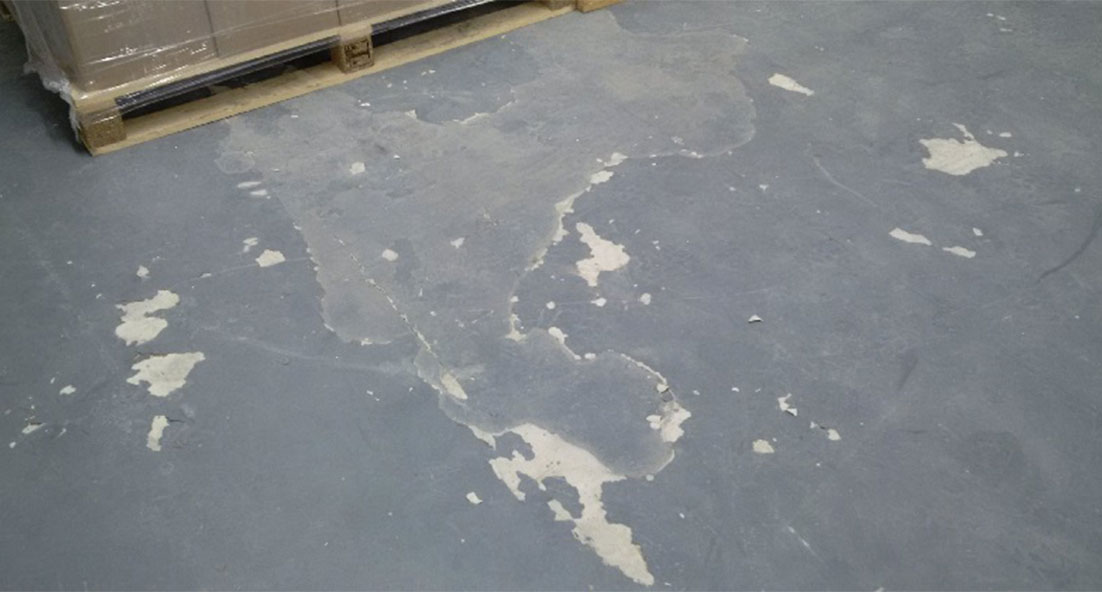
A lot of people simply wish to re-coat their floors, due to the existing coating flaking, bubbling or lifting. Alternatively, the existing may be well adhered but has simply become worn and tired.
One big mistake is to simply overcoat the existing surface and look forward to everything being fresh and bright and ready for use. Unfortunately, no sooner have they completed the task, they find the first use simply lifts the paint off the floor!
The next point of ‘attack’ for the unfortunate painter, is to contact the manufacturer and complain bitterly that ‘this must be a bad batch of paint’!
Can I say at this point that it is EXTREMELY unlikely to be the fault of the paint! “Huh!” I hear you say “How typical!” Well, with no further ado – here are three very simple checks that you can make to see if you can pinpoint the real issue. Simply peel a piece of the offending coating (or de-laminating screed) off the floor, turn it over and take a close look at the back!
9 times out of 10, this will highlight one of the three most common issues;
- Your sample piece simply peels off the surface, leaving the back of the sample free of any evidence of the existing substrate.
This instantly shows that the substrate has quite possibly been previously sealed with some sort of surface hardener or silicone sealer, resulting in the fact that the subsequent coating has zero penetration into the substrate.
- On the back of your sample piece you can see it covered with what was the existing paint and/or you might clearly see it covered in anything from a fine layer of dust through to sizable pieces of concrete!
This instantly shows that the ‘new’ paint has adhered perfectly well to the existing coating BUT, the existing has de-laminated from the surface. Should the back be showing either the fine layer of dust and/or concrete, again, this proves very factually that either the surface has not been prepared sufficiently and/ or that the concrete is simply breaking up.
Should ANY of the above points be relevant, then an alternative method needs to be taken to help solve this problem BEFORE any further application of coating or screed:
Why Correct Surface Preparation is so important?
- Oil, waxes and chemicals (should they have been previously present in the substrate) can often be seen on the back of the sample piece and/or can mostly been seen clearly on the concrete surface itself.
- Should it be rising damp, the floor from which the paint has just been removed will be darker than the surrounding previously exposed concrete. This is simply because the previously exposed areas have been open to the atmosphere and any dampness will rise and evaporate.
FURTHER TECHNICAL HELP REQUIRED?
We hope you have found the above information both interesting and helpful. However, should you still have be unsure as to the best solution for your needs, please don’t hesitate to ring our technical helpline now on 01234 846400. We have a fully qualified team ready to give practical advice and help assist you as much as possible.
